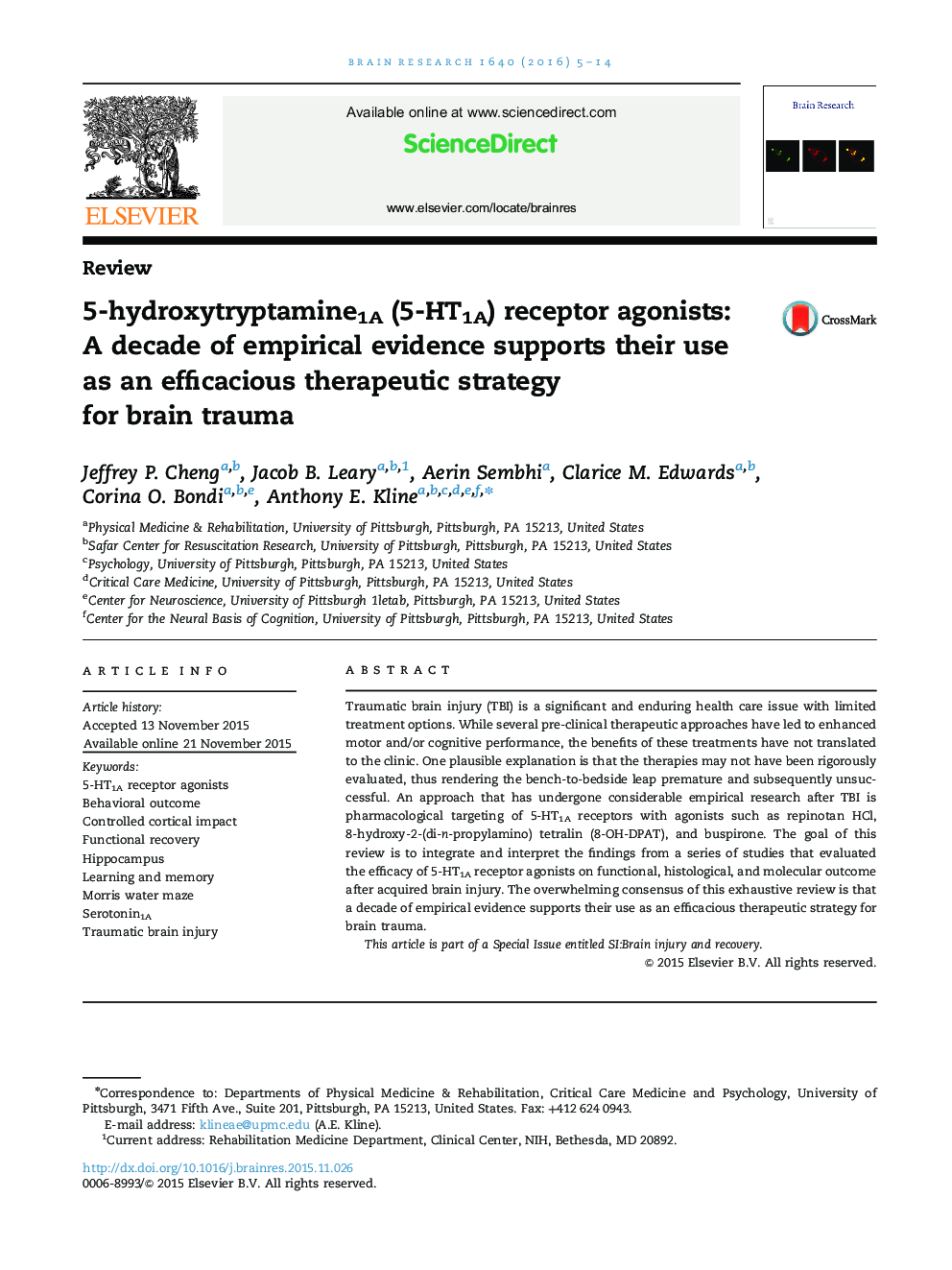| کد مقاله | کد نشریه | سال انتشار | مقاله انگلیسی | نسخه تمام متن |
|---|---|---|---|---|
| 4323641 | 1292363 | 2016 | 10 صفحه PDF | دانلود رایگان |

• 5-HT1A receptor agonists facilitate cognitive recovery after experimental TBI.
• 5-HT1A receptor agonists confer neuroprotection after experimental TBI.
• The benefits of 5-HT1A receptor agonists are seen when administered acutely and chronically after TBI.
• Some benefits of 5-HT1A receptor agonists can be augmented when combined with a preclinical model of neurorehabilitation.
• The 5-HT1A receptor agonist buspirone is used in other CNS disorders and thus translation to the clinic may be expedited.
Traumatic brain injury (TBI) is a significant and enduring health care issue with limited treatment options. While several pre-clinical therapeutic approaches have led to enhanced motor and/or cognitive performance, the benefits of these treatments have not translated to the clinic. One plausible explanation is that the therapies may not have been rigorously evaluated, thus rendering the bench-to-bedside leap premature and subsequently unsuccessful. An approach that has undergone considerable empirical research after TBI is pharmacological targeting of 5-HT1A receptors with agonists such as repinotan HCl, 8-hydroxy-2-(di-n-propylamino) tetralin (8-OH-DPAT), and buspirone. The goal of this review is to integrate and interpret the findings from a series of studies that evaluated the efficacy of 5-HT1A receptor agonists on functional, histological, and molecular outcome after acquired brain injury. The overwhelming consensus of this exhaustive review is that a decade of empirical evidence supports their use as an efficacious therapeutic strategy for brain trauma.This article is part of a Special Issue entitled SI:Brain injury and recovery.
Journal: Brain Research - Volume 1640, Part A, 1 June 2016, Pages 5–14